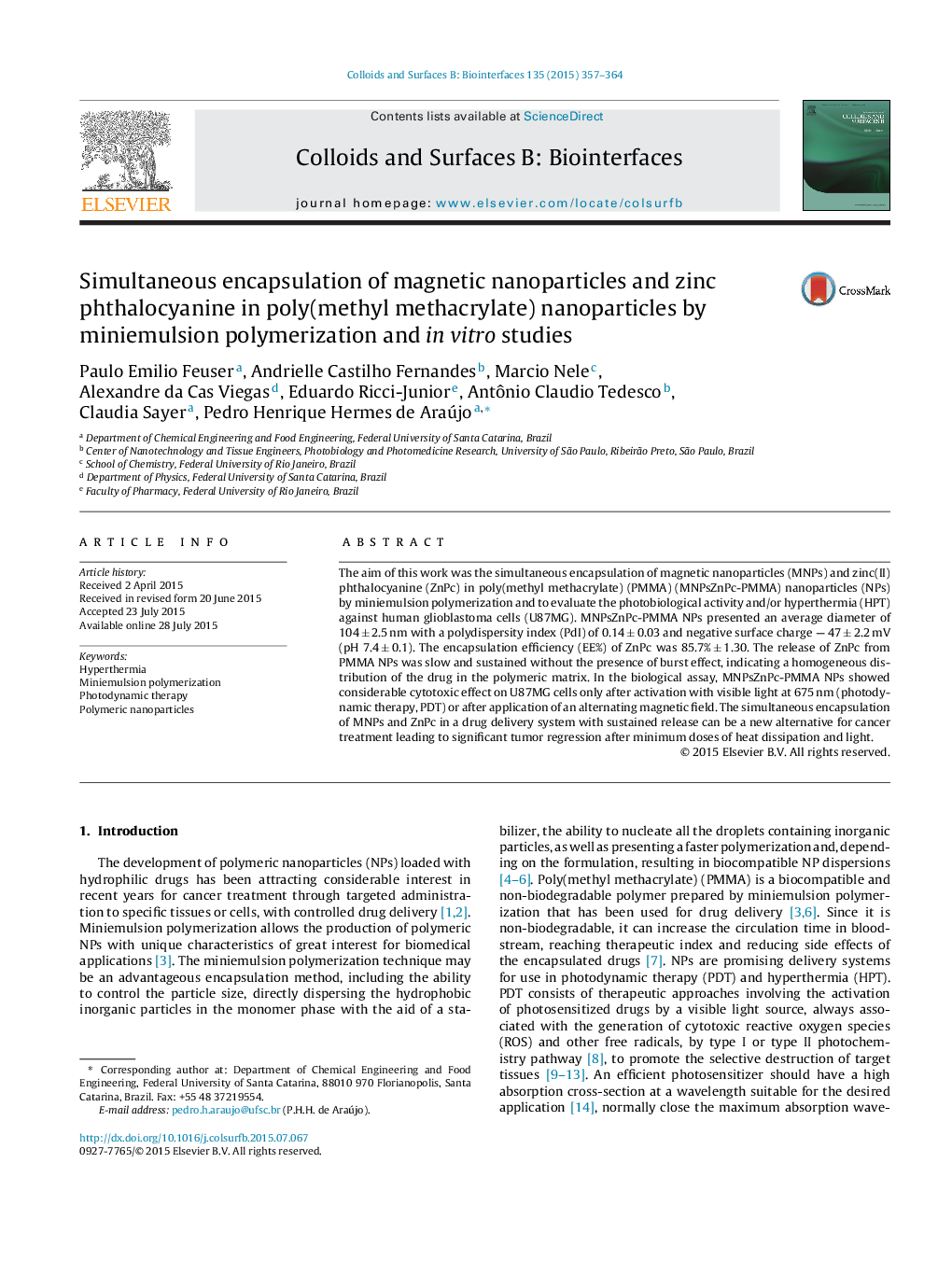| کد مقاله | کد نشریه | سال انتشار | مقاله انگلیسی | نسخه تمام متن |
|---|---|---|---|---|
| 599252 | 1454269 | 2015 | 8 صفحه PDF | دانلود رایگان |
• Simultaneous encapsulation of zinc phthalocyanine and magnetic nanoparticles in poly(methyl methacrylate) nanoparticles was obtained by miniemulsion polymerization.
• Release behavior of zinc phthalocyanine was evaluated in vitro.
• Biocompatibility of nanoparticles was evaluated.
• Cytotoxicity of nanoparticles was evaluated in glioblastoma cells by simultaneous treatment — photodynamic therapy and hyperthermia.
The aim of this work was the simultaneous encapsulation of magnetic nanoparticles (MNPs) and zinc(II) phthalocyanine (ZnPc) in poly(methyl methacrylate) (PMMA) (MNPsZnPc-PMMA) nanoparticles (NPs) by miniemulsion polymerization and to evaluate the photobiological activity and/or hyperthermia (HPT) against human glioblastoma cells (U87MG). MNPsZnPc-PMMA NPs presented an average diameter of 104 ± 2.5 nm with a polydispersity index (PdI) of 0.14 ± 0.03 and negative surface charge — 47 ± 2.2 mV (pH 7.4 ± 0.1). The encapsulation efficiency (EE%) of ZnPc was 85.7% ± 1.30. The release of ZnPc from PMMA NPs was slow and sustained without the presence of burst effect, indicating a homogeneous distribution of the drug in the polymeric matrix. In the biological assay, MNPsZnPc-PMMA NPs showed considerable cytotoxic effect on U87MG cells only after activation with visible light at 675 nm (photodynamic therapy, PDT) or after application of an alternating magnetic field. The simultaneous encapsulation of MNPs and ZnPc in a drug delivery system with sustained release can be a new alternative for cancer treatment leading to significant tumor regression after minimum doses of heat dissipation and light.
The application of photodynamic therapy and hyperthermia together in a drug delivery system with controlled release designed to work synergistically may lead to a significant tumor regression after minimum doses of heat dissipation and red light, decreasing side effects and increasing pharmacokinetic profile.Figure optionsDownload as PowerPoint slide
Journal: Colloids and Surfaces B: Biointerfaces - Volume 135, 1 November 2015, Pages 357–364
